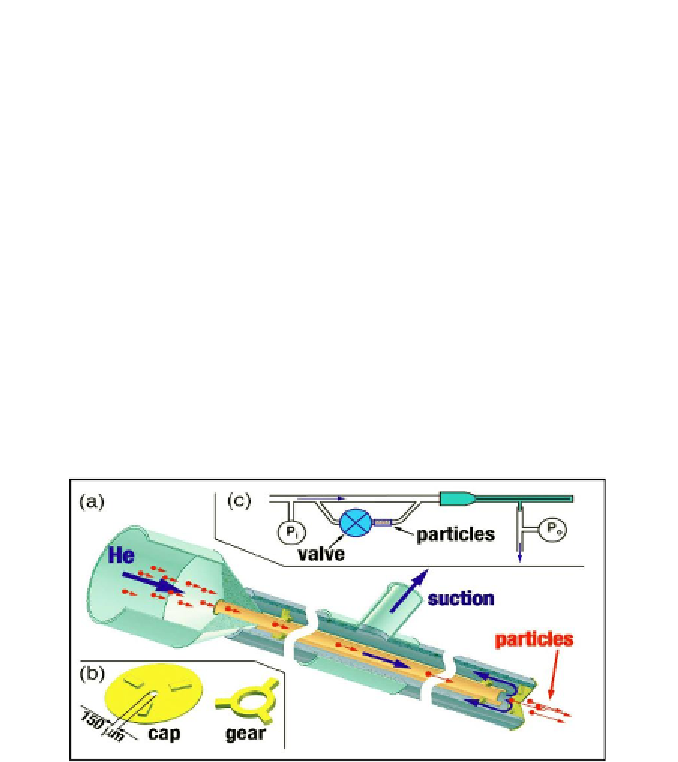Biomedical Engineering Reference
In-Depth Information
The thermal spray devices add significant heat to the particles, in order to
deposit them onto a substrate in molten form. This is usually accomplished by
the burning of a fuel gas, except in the case of the detonation gun, where a
controlled explosion is used to produce high temperatures and pressures that
accelerate particles to supersonic velocities (Fagoaga et al., 1998)
Current cold spray devices utilize compressed gas released at high
pressures, then accelerated to supersonic velocities through a converging-
diverging (CD) nozzle. Typical gas pressures for this method are 150 - 450 psi
(Papyrin 2001). Gases are typically helium, air, or nitrogen. Helium results in
the highest velocities, due to its high speed of sound. The gases can also be
preheated, sometimes up to 700
0
C, to increase the particle velocities (Kim et
al., 2004). Unlike the thermal spray process, however, the temperature is
always lower than the melting point of the particle, preventing any phase
change in the material (Assadi et al., 2003). Speeds in this process can range
from 300 m/s to 1200 m/s (Raletz et al., 2006). One similarity between both
the thermal spray processes and the cold gas dynamic spray processes is the
continuous flow of gas through the device.
Reproduced with permission. Copyright retained by Inderscience Publishers.
Figure 8. Illustration of pneumatic capillary gun (Rinberg et al., 2005).
Pneumatic capillary guns are another type of device capable of
accelerating small particles to supersonic velocities. These devices have been
developed to deliver genetic material to living tissue, and fire particles ranging
in size from 20 - 50 micrometers (Rinberg et al., 2005). These devices operate
using Helium gas at pressures between 100 - 200 psi, with highest average
particle speeds estimated at 400 m/s (Rinberg et al., 2005). An illustration of

